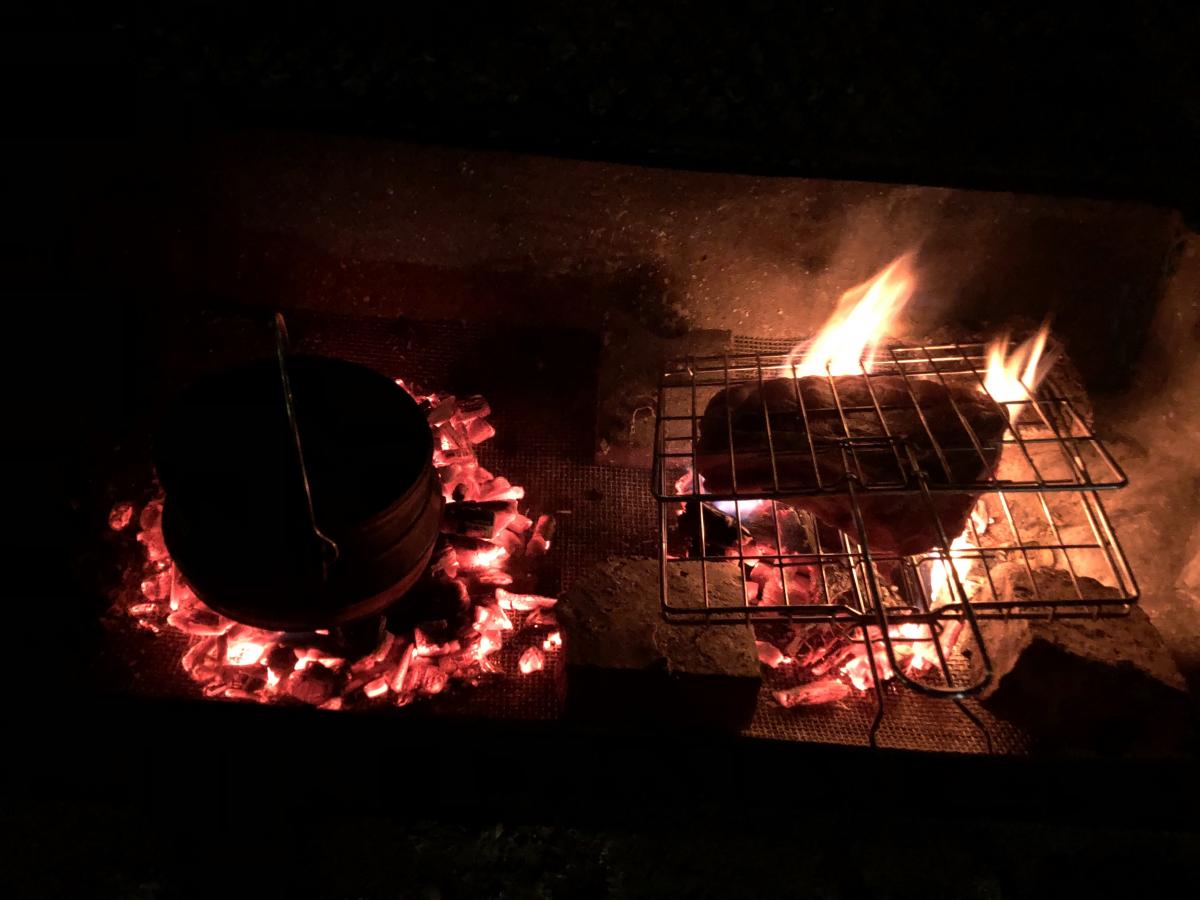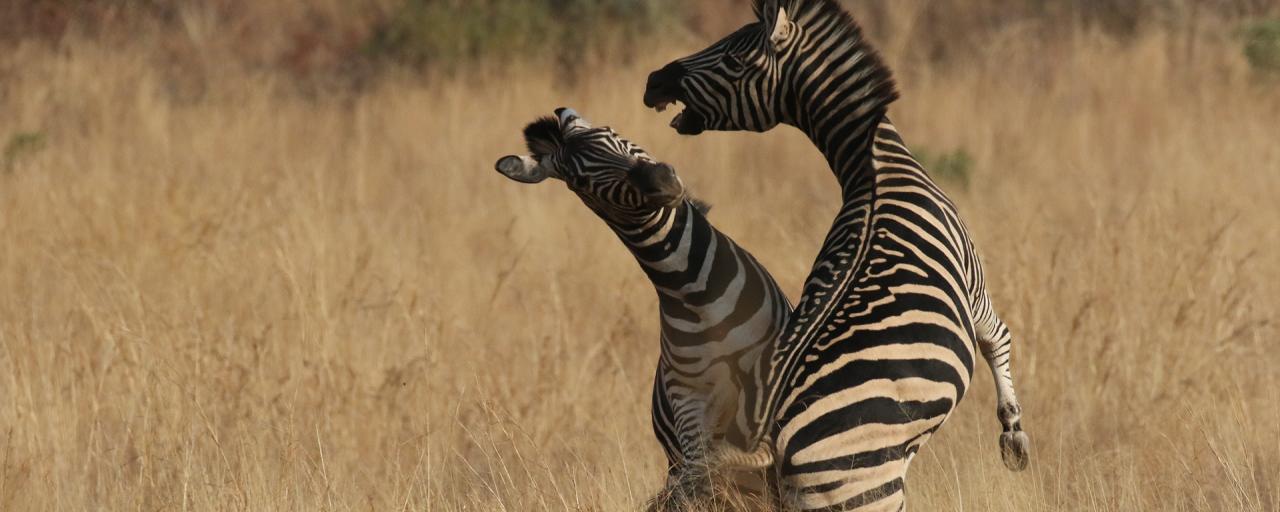Submitted by SafariADV on Tue, 2019-11-05
We are at the Pilanesberg National Park in South Africa, we arrived yesterday from Johannesburg and we will spend three days here in all; yesterday's safari was very exciting and we are curious to know what the Pilanesberg has in store for us today.
We wake up at 5.30am, from now on, for the duration of the trip, this will be, with rare exceptions, the time set on our alarm.
We have breakfast inside Dr. Livingstone, in what is our living room of 3 square meters, it is still dark outside and it is quite cold; then we prepare and we leave, we are ready to face another day of safari.
We enter the park from the Bosele Gate, that separates the park area from the area of the Manyane Resort and its campsite, the sun is rising now and it is beginning to color the sky; we continue along the main road and at less than 1 km from the gate we find two white rhinos, well as start of the day it is not bad at all.
From here we take the Polokwane, a secondary and dirt road and, as we drive along it, the sun rises and the sunrise has spectacular colors; at a certain point, although we are proceeding slowly, turning at a curve we frighten a white rhino that was on the roadside, poor beast, it was not our intention to frighten it
We stop and wait for it to calm down as we take photos at dawn that is spectacular, then we continue and return to the Thwene Drive, but we stay there just a short moment, in fact we take another secondary road: the Tilodi.
Along the Tilodi there are some very scenic pools, but we have taken this detour for another reason: here we find an archaeological site dating back to the Iron Age and we want to go and see it.
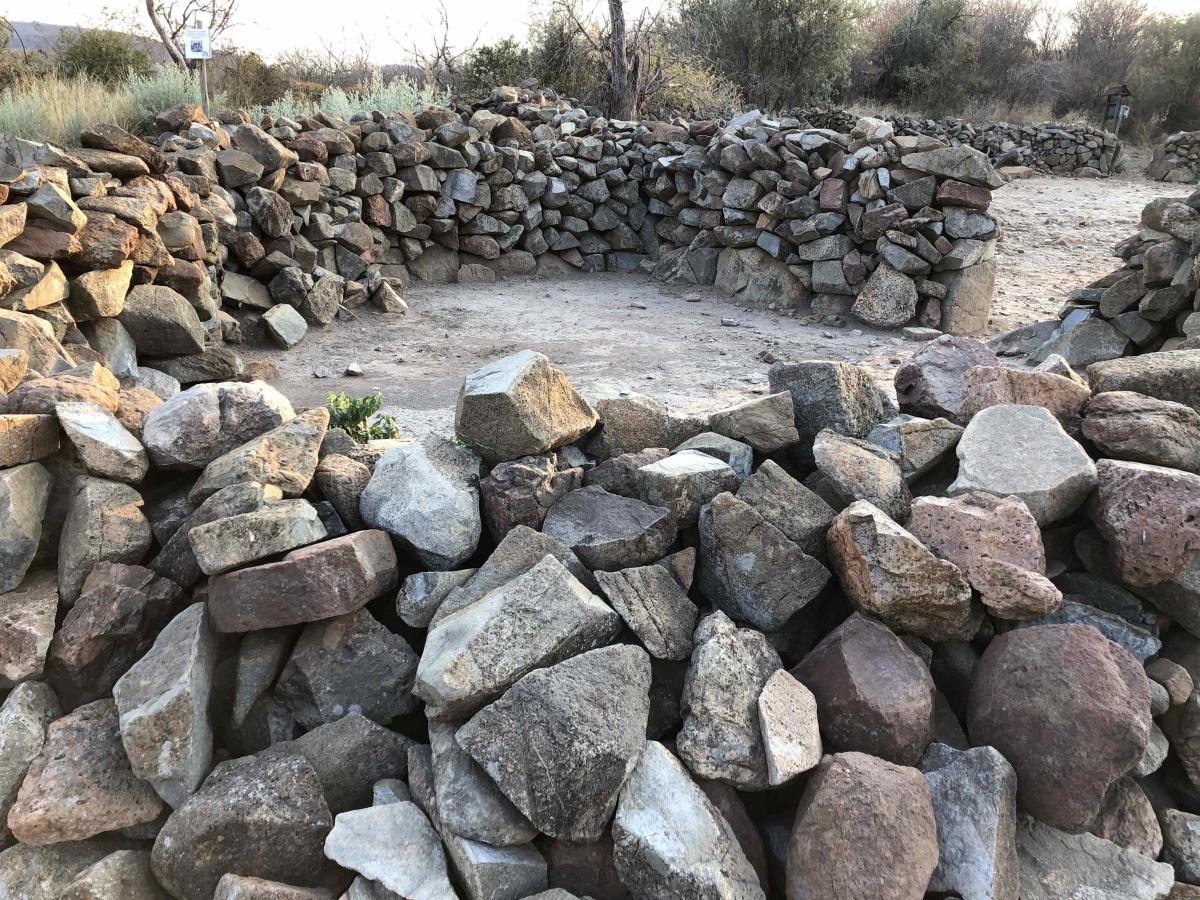
We chose to come early in the morning as the site is completely exposed to the sun and without a shelter; so it is good to come early in the morning or at sunset or you should hope for a cloudy day.
The site is fenced to keep animals away, even if there is a disturbing sign on the gate that says "don't enter if the lights are flashing" and this is because inside there are potentially dangerous animals, we wonder who and how to activate the lights and with what timeliness; in any case we will keep our eyes open and if we face the situation, we can't do anything else.
On the site there are some stone walls that were once the base of the huts or the walls of some structures or of the village itself; there is a marked path, we follow it and we read all the information boards that are very interesting.
The Iron Age in these places began in 300 a.C. and ended with the arrival of the European colonists in the nineteenth century; in this village, and in the surrounding area, lived the BaKgatla, a tribe of the Tswana, the Tswana still live in the area adjacent to the Pilanesberg National Park and is the main ethnic group in Botswana.
We return tothe Thwene Drive to where the detour to the Mankwe Way is located, we drive only the first part of this track, up to the intersection with the Motlobo and then the Tlhware; in this loop we saw another white rhino, but how many are here at the Pilanesberg? We had read that there are several but we did not think it was so easy to see them, it is probably we who are lucky.
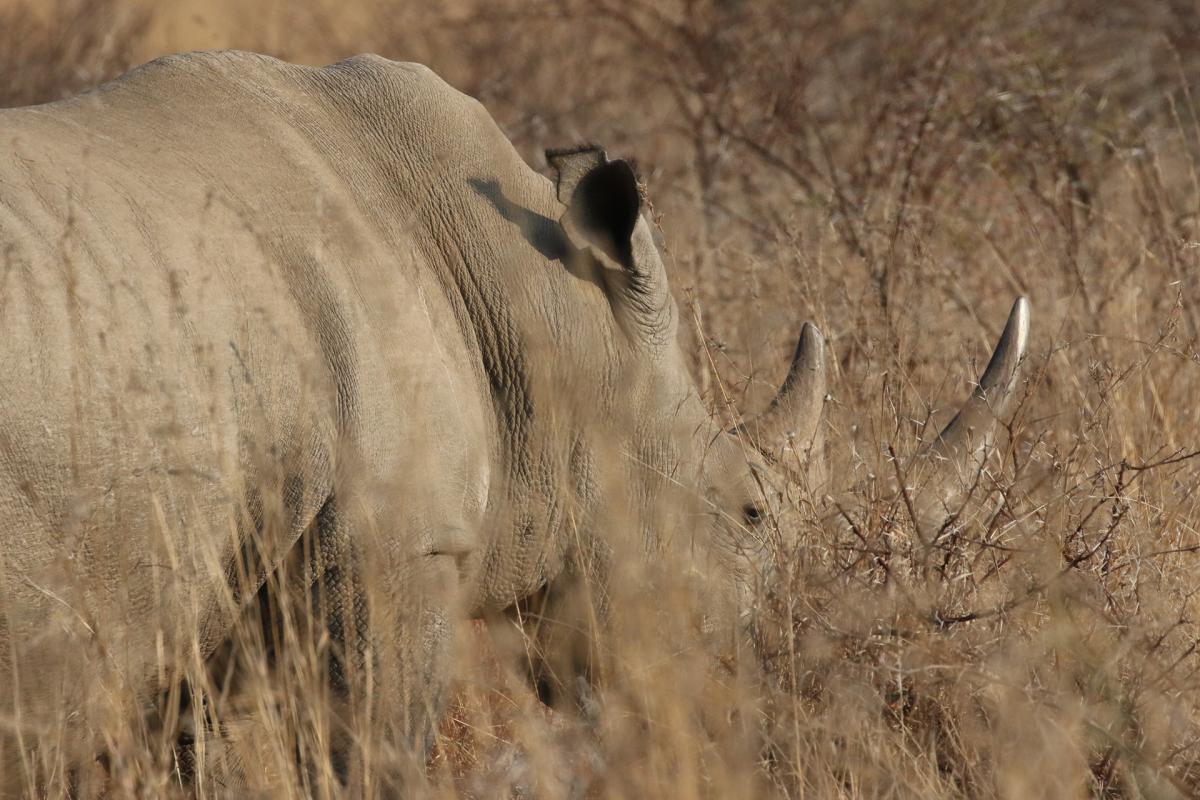
We also see other herbivores such as zebras with foals and wildebeests.
While along the Hippo Drive we find a large herd of zebras, there are several specimens that are fighting by biting and kicking themselves; they are very beautiful to photograph.
It’s 9.30am and we want a coffee, instead of having a Nescafe in the car or at a picnic area we decide to go to the Pilanesberg Center.
The Pilanesberg Center is located in the only building that dates back to 1936, that survived the establishment of the national park; yes, because here, before this area became wild again, there were several farms where they raised cattle.
The redevelopment of the territory to bring it back to its original state was not a simple operation, in addition to removing the buildings and all traces of human intervention, it was necessary to remove all the plants that were cultivated to replace them with species that were present here previously, moreover the area had to be repopulated with all the species of wild animals, not without various problems.
We enter the Pilanesberg Center, where there is a small souvenir shop, a bar and restaurant; we order two coffees and sit at the wooden tables that are on the terrace overlooking a pool where, for as long as we have been here, different animals have come to drink.
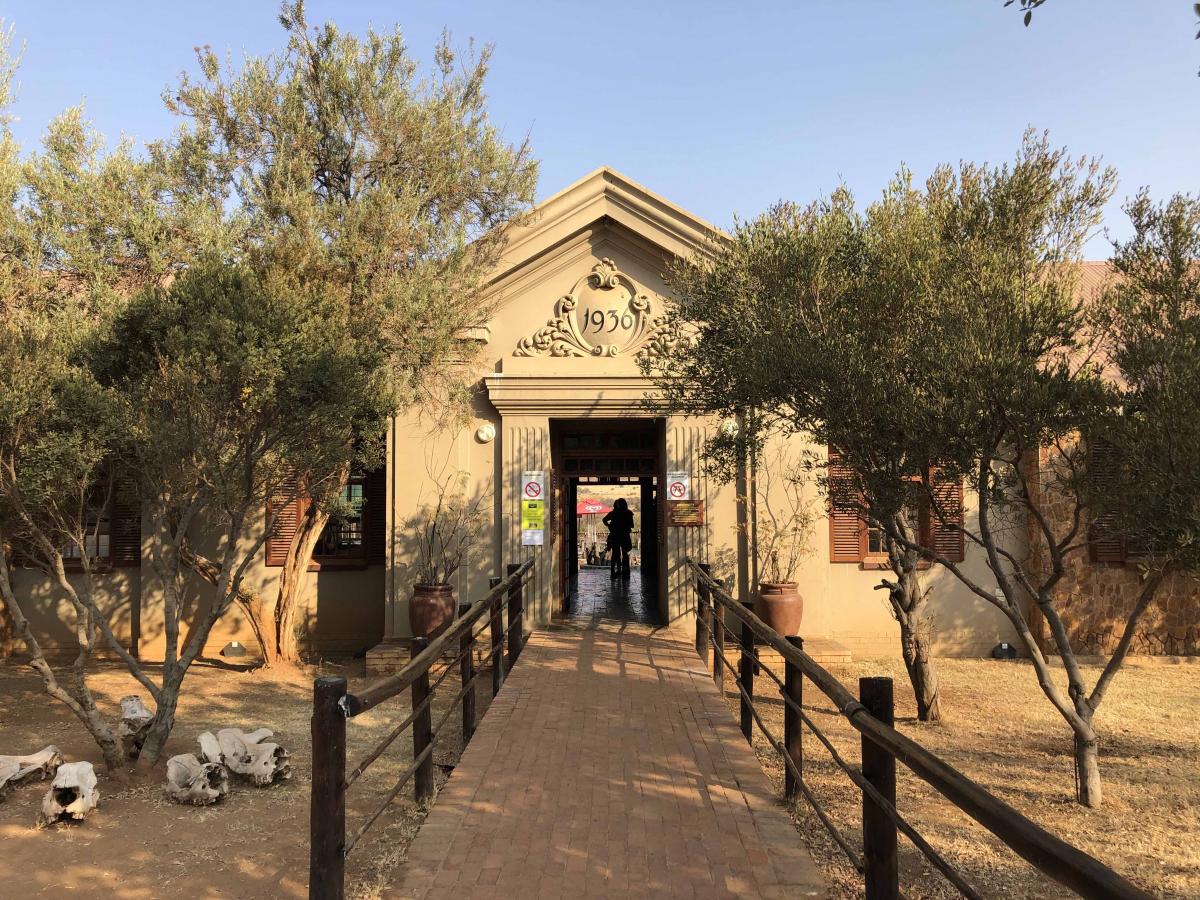
It's really nice here, we are in the sun but there are umbrellas so it's really good, so much so that we decide to come tomorrow for lunch.
We leave and continue along the Kgabo Drive until we take the Tlou Drive.
In the national parks we always respect the speed limits, in fact often we go even slower to be able to better sight the animals and fortunately because, while we were proceeding on the Tlou Drive, from the nothing a female of kudu has materialized that has crossed us the road jumping fast; we didn't really see it until we found it in front of us.
Shortly after we see some cars stopped, surely they saw something, yes but what? We see nothing.
We approach one of the first cars and they tell us "they say they saw a leopard but we don't see it", we think "who knows where it hid, assuming it's really there".
We take the binoculars to look better and we find it immediately: it is very far away and is walking in the tall grass, it is moving away from where we are now; we try to take some pictures, we manage to immortalize it but it is really very far away, what a pity.
We continue our safari and take the Tshukudu Ntsho that runs for a good part along the Mankwe river; here is also a lookout hut, the Makorwane Hide, that offers an excellent vantage point right on the river and on the Makorwane Dam.
We park, take reflexes and binoculars and enter the shed; time to sit on the wooden bench and, on the opposite bank from where we are, a group of elephants comes to the river to drink, it will be more than twenty and the most beautiful thing is that there are many puppies and this fills us with joy because it means that they live well and are quiet here.
After all the specimens of the herd have quenched their thirst, they begin to walk along the bank, passing in front of our eyes, they overcome our position and then cross the river, we try to understand where they are headed.
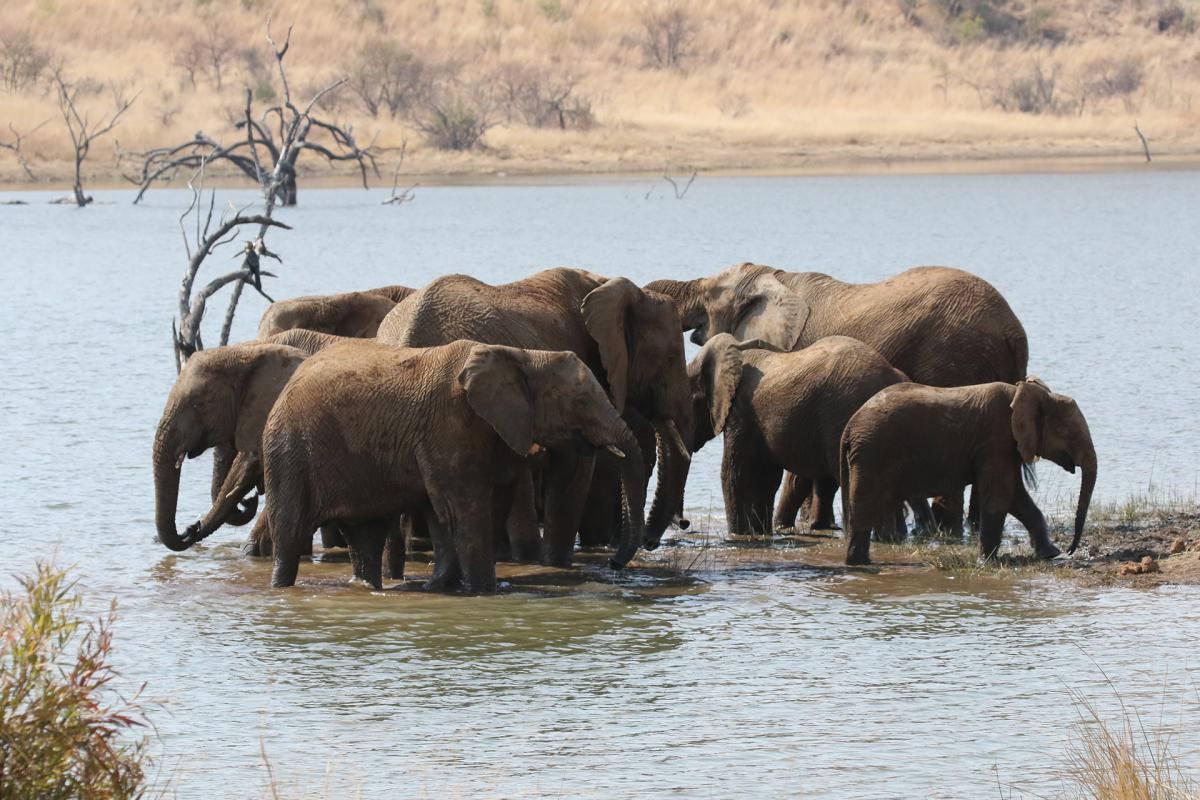
We see the elephants ascend along the shore where we are, right next to two safari cars that move immediately to maintain a safe distance; the elephants reach the road and head towards the shed where we are.
We leave the shed and go to the parking lot where Dr. Livingstone is, but we keep away from the road because probably the elephants will pass there and it is always good to stay at a distance.
Here they are! They are coming and, one at a time, they pass on the road that is outside the shed parking lot; we take photos from afar, but there are two guys who instead approach a little too much, they will be 2 or 3 meters from the elephants, they are crazy, if an elephant gets scared and attacks them they make a bad end.
All the elephants pass the entrance of the shed, someone looks badly at the two guys and swells their ears but then continues on its way, they head to the river and return to drink; we go back to the shed where we see them very well, now they are really close.
One of the puppies, instead of drinking, makes the ducks that are there a short distance escape; we do not understand if it is bothered by their presence or if it is playing, but whatever the reason, it is really funny in our eyes.
After seeing this wonderful scene we decide that we should continue our safari, we head towards Tlou Drive and we stop on the bridge because we see another herd of elephants drinking at the river; we observe them a little but when we see that they are moving towards us we decide to leave, we would not like to find them too close to the car.
We continue and we go to see if at the Tlou Dam there is movement, we arrive and we find a white rhino with the puppy, they are drinking and the puppy freezes when it hears the noise of our car, it was not our intention to frighten it and we immediately turn off the engine and remain there in silence to observe them.
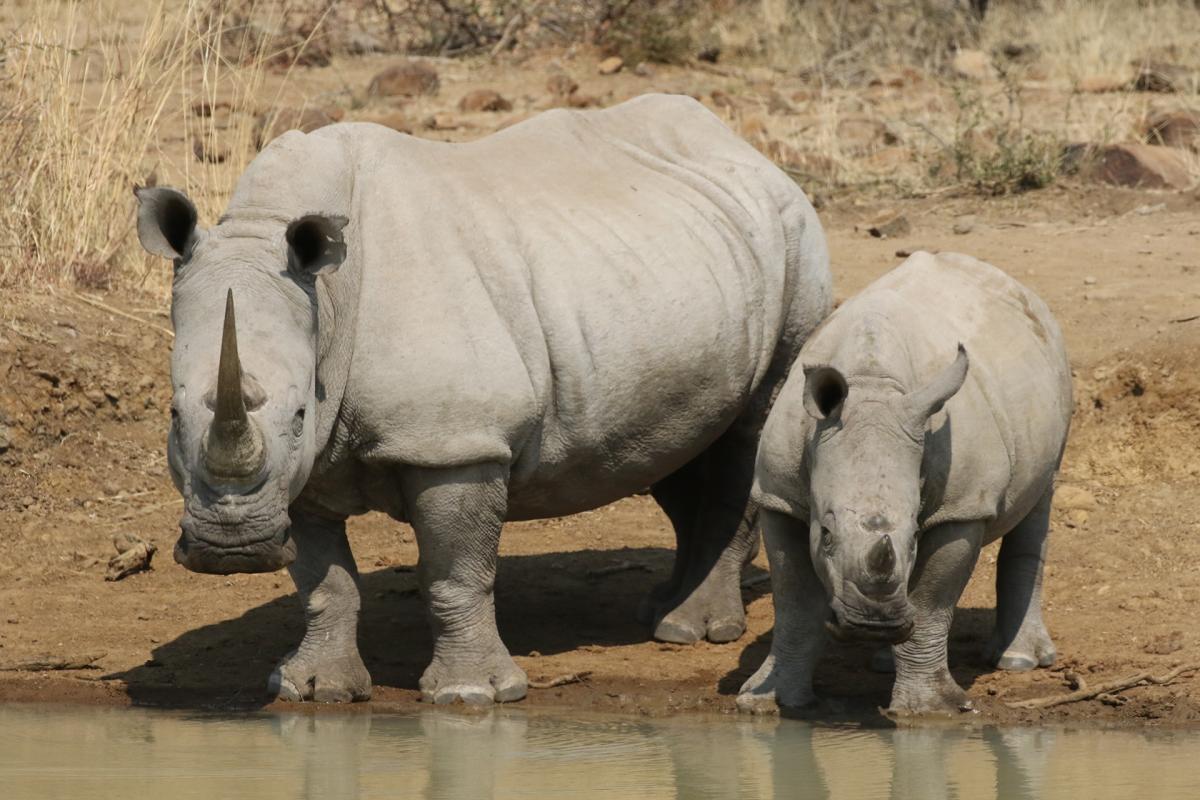
When they finish drinking they graze a little bit of grass, or at least they try but there isn't much, and then they slowly move away from the pool and disappear into the bushes; it was an exciting sighting.
We continue along the Tlou Dam, we cover it all and then we turn on the Moloto Drive to reach the Batlhako Dam where there is another sighting shed; here there is no one, we park and enter the shed.
The puddle of water is beautiful and scenic and very crowded, we see several elephants in the water that bathe or splash water, they are too funny, when there is water they always make a mess.
There are also some hippos and several water birds and, perched on a dry branch of a tree that searches the surroundings, there is an African fish eagle, it will surely be looking for a prey.
We have all this wonder of the nature for us and it is spectacular!
Since we have not had lunch today, we decide to continue and arrive at the picnic area, even here there is no one; the landscape here is fascinating, we are on a small promontory overlooking the surroundings, we take a good look around since there is no fence and we would not like to have some big cat as guest intrigued by our presence.
We have lunch enjoying the silence and the wonderful view and then we go back to our Dr. Livingstone and leave again.
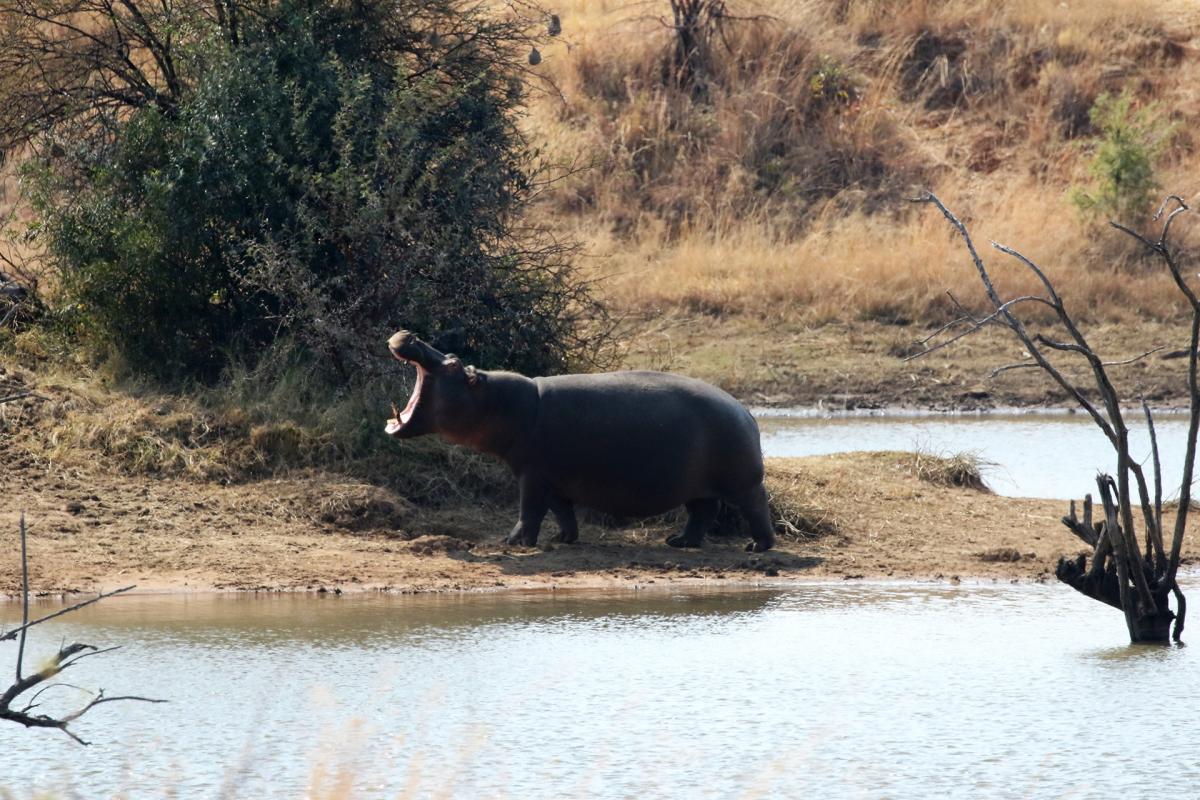
We drive all along the Moloto Drive, this is a very scenic road, and here it seems to be in another park compared to the Pilanesberg we have seen so far and we are happy to have decided to follow it even though, as there is no water in this area, there are less animals.
We return to the Tshukudu and Ntsho Drive, after having traveled the Nare Link, and we see two herds of elephants both near the road, they are eating and they are calm and therefore we pass without problems; immediately after we sight another pack a little further away.
In this area it is easy to spot elephants especially in the afternoon as there is permanent water and these wonderful mammals are dependent on water.
We go back to the Makorwane Hide and stay there a while to admire the elephants but also different water birds, at a certain point a South African asks us "but did you see the leopard?" And we replied that we saw it in the distance, at that point he tells us "it hunted in front of my car" and shows us the photos, well what to say, it's really true that in safari you also need a good dose of luck.
Also this day of safari is coming to an end, so we head towards Tshwene Drive; we have to cover it all to get to our campsite.
Along the way we spot several giraffes, the ubiquitous impalas, wildebeests in an area that has recently burned and two white rhinos, we wonder if they are the same as this morning, but looking at them carefully we realize that these are others.
We arrive at the campsite, return to our pitch, prepare Dr. Livingstone for the night and light the fire to cook dinner; when we open the refrigerator to get a drink we realize that it is no longer working, it is on but it does not refresh, and now?
We need to understand what to do because we certainly can't do the whole trip without it, fortunately the Tracks4Africa and Maps.me apps allow you to do even offline searches; we discover that in Rustenburg there is an Outdoor Warehouse, so the day after tomorrow, instead of going to the Marakele National Park, we will make a detour to get a new refrigerator.
On one hand this is bad luck, on the other less bad it happened while we are still in South Africa; in Botswana it would certainly have been more problematic.
